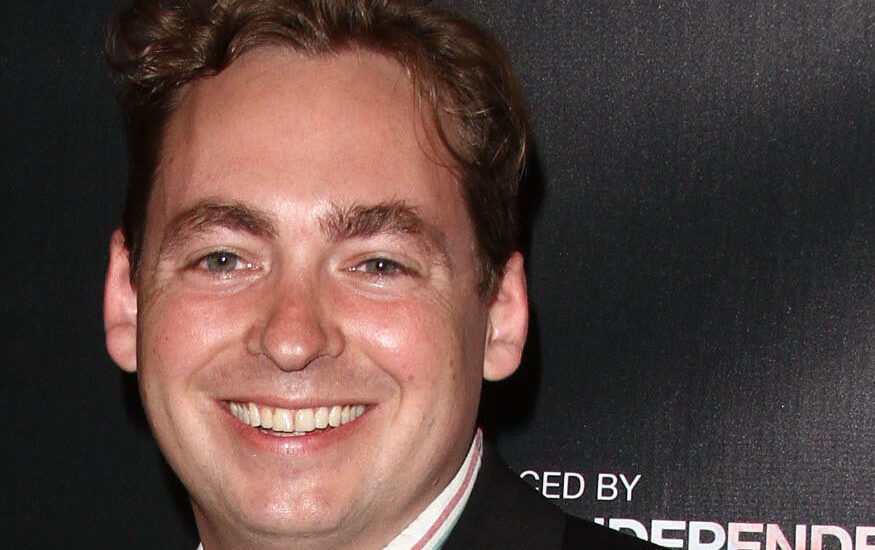


Paul Jarrett isn’t just another Hollywood producer—he’s a leader in a new world. At a time when traditional film financing models are crumbling under the weight of studio mergers, dwindling theatrical attendance, and skyrocketing production costs, Jarrett and his company, Triple Win Studios, have found a way to do what many in Hollywood thought was impossible: make high-quality films and TV shows without relying on traditional funding.
By fusing brand sponsorships with content production, he’s found a new, transparent model that benefits everyone—from filmmakers to advertisers to distributors. In this conversation, he breaks down exactly how it works, why filmmakers need to start thinking differently about financing, and what the future of the industry looks like.
Your background is in film and television production, but now you’re leading Triple Win Studios. What inspired that shift?
I started as a line producer, moved into directing, and then executive produced non-scripted television. But a year ago, I partnered with Ivan Ali-Khan, a former advertising executive from IPG in England. He introduced me to the broader world of media investment and advertising, which I hadn’t fully explored before. We realized there was a real opportunity in the current climate for alternative financing models. Traditional methods were struggling, and ad agencies had untapped potential to invest directly in content. That’s how we formed Triple Win Studios—to bring advertisers, content creators, and distributors together in a way that benefits everyone.
This model is more common in Europe, but not in the U.S. Why do you think that is?
In the U.S., film and TV financing has been dominated by studios, streamers, and private equity. Product placement and brand sponsorships exist, but they’ve never been fully integrated into the financing structure the way they are in Europe. We saw an opportunity to change that by creating a transparent, structured model where advertising dollars don’t just buy a product placement—they help fund production in a way that makes sense for everyone involved.
Are brands and advertising agencies excited about this shift?
Absolutely. Many of these companies already invest in media, just not directly in content production. What we do is bridge that gap. We work with media buying agencies and advertising firms to find opportunities where a network, studio, or streamer already has an interest in content that aligns with their brand strategy. If they’re excited about the project, they have commercial inventory they can leverage to make it a win-win-win—hence our name, Triple Win Studios.
Let’s say a filmmaker has a horror film with partial funding from Tubi or Peacock. How would you help them?
Tubi is definitely a growing market. If a project has interest from a streaming platform that also has commercial inventory—whether it’s owned by a larger entity or has its own ad sales division—we connect the dots. We talk to their acquisitions or development teams and their ad sales teams, then identify the right media buying agencies who would benefit from financing that piece of content. We structure the deal between multiple parties, ensuring that everyone benefits. And because we’re also producers, we’re not just putting deals together—we’re making sure the content gets made at the highest level.
Filmmakers are struggling to get greenlit right now. How does your model help?
There’s a lot of anxiety in the industry. Studios and streamers are more hesitant to fully fund projects, which means more filmmakers are looking for co-financing solutions. What we do gives producers more influence over their IP and helps them get to a yes faster. If a filmmaker has a great project with real commercial appeal but can’t get a full budget commitment, we help fill that gap.
What kind of filmmakers are you looking to work with?
We’re looking for filmmakers with projects that have commercial value, ideally with some packaging already in place—whether that’s cast, distributor interest, or a compelling story with a built-in audience. Track records help, but we’re also interested in fresh voices who have something unique to offer.
Genres like horror and action are often seen as the most bankable. Is that what you focus on?
Action and affordable thrillers are great because they travel well internationally and tend to have a built-in audience. Premium award-caliber films are also interesting if they have strong distribution potential. Comedy is tougher because it’s so cast-dependent. We’re also interested in documentary television, especially with a built-in audience or a proven team behind it.
You mentioned Tubi as an example of a growing market. Where do you see the industry shifting?
The AVOD (advertising-based video on demand) and FAST (free ad-supported streaming TV) markets are exploding. It’s like podcasts—everyone’s figuring it out in real-time. The budgets aren’t as big as we’d like yet, but as advertisers get more involved, we see an opportunity to bring premium content into that space. It’s not just happening in the U.S.; it’s a global shift.
You recently brought Daniel Maze onto your team. How does he fit into your vision?
Daniel is now our Head of Strategic Partnerships. He’s got an incredible background in film finance, European tax credits, and distribution. We met through a mutual friend in Australia and immediately saw synergy. He brings deep expertise in indie films, international co-financing, and sales, which expands our ability to structure deals creatively. His presence just multiplies our effectiveness.
Where do you see the film and TV industry in two years?
I hope audiences start returning to mid-budget films—not just the biggest blockbusters. I hope tax credits and international co-financing expand so that the U.S. and other countries work together more seamlessly. And I think advertising and tech will play a bigger role in financing, targeting specific audiences, and creating new revenue streams. We’re at a pivotal moment, and the people who rise to the occasion will be the ones who reshape the industry.
What other advice do you have for filmmakers struggling to finance their projects?
Don’t just think about traditional routes. Look at where the money is moving. Advertising, tech, and alternative funding models are the future. If you have a great project and a clear audience, there’s a way to get it made—you just have to be willing to adapt.




